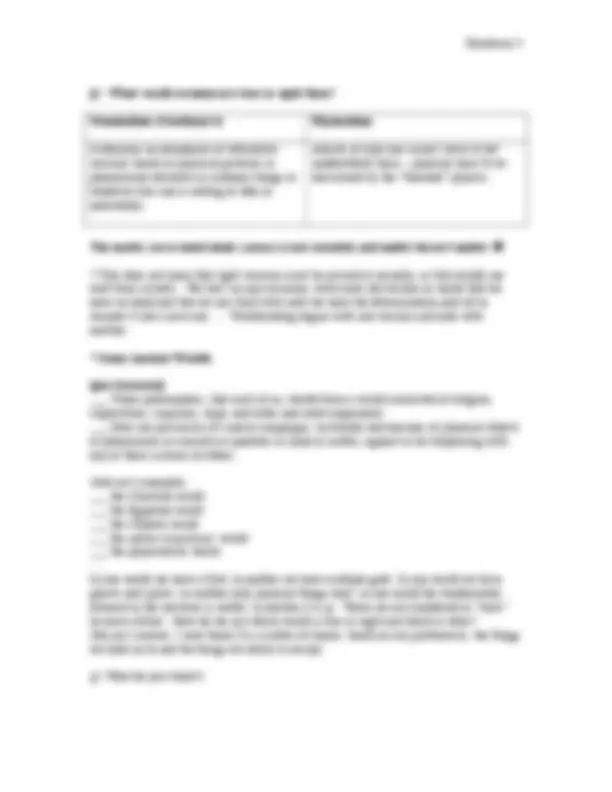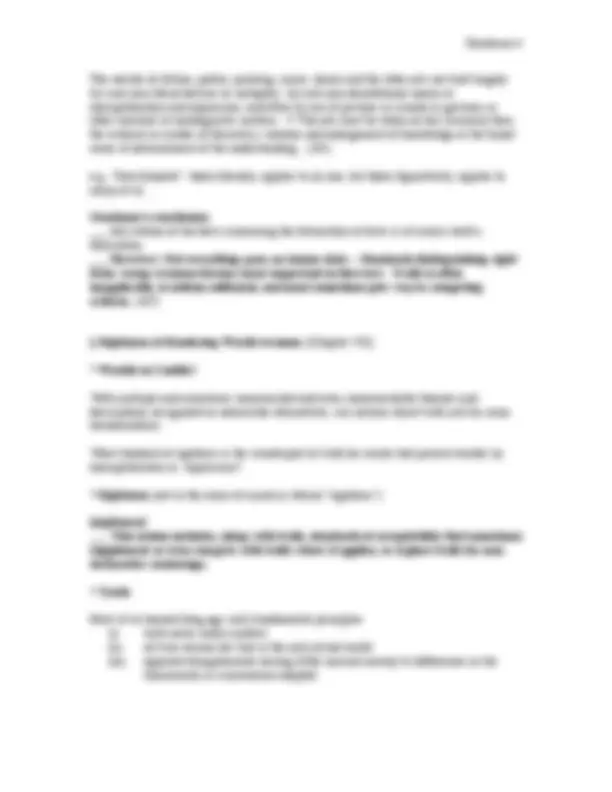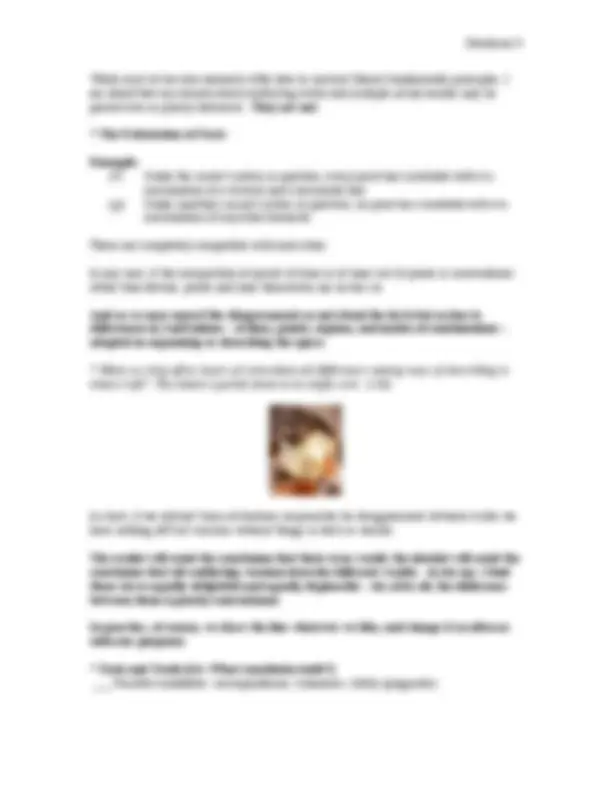





Study with the several resources on Docsity

Earn points by helping other students or get them with a premium plan


Prepare for your exams
Study with the several resources on Docsity

Earn points to download
Earn points by helping other students or get them with a premium plan
Community
Ask the community for help and clear up your study doubts
Discover the best universities in your country according to Docsity users
Free resources
Download our free guides on studying techniques, anxiety management strategies, and thesis advice from Docsity tutors
Material Type: Notes; Class: Metaphysics; Subject: Philosophy; University: California State University - Fullerton; Term: Spring 2008;
Typology: Study notes
1 / 7

This page cannot be seen from the preview
Don't miss anything!




Phil 420: Metaphysics Spring 2008 [Handout 10] Professor JeeLoo Liu Nelson Goodman: Ways of Worldmaking [II] § A Puzzle about Perception [Chapter V] The visual system is persistent, inventive, and sometimes rather perverse in building a world according to its own lights; the supplementation is deft, flexible, and often elaborate. [JL: Our eyes/consciousness could “fill in” things that are not there; they can also delete things that are there] Example: ___ We strive mightily and resourcefully, consciously and automatically, to supply whatever is required to join separate pieces into one object or pseudo-object, as in the familiar cases of this figure: But unless we somehow manage – perceptually or conceptually or conjecturally – to fill in between the two separated entities or events, we resist combining them into one thing. *** the color phi phenomenon: the illusion of motion** Goodman’s interpretation: Virtually every clear case of visual motion perception depends on abrupt shift in color.
The Implications: ___ The task of finding the facts does not become arbitrary or pointless when the facts are of ‘apparent’ rather than of ‘real’ or of physical motion. “Apparent” and “real” here are insidiously prejudicial labels for facts of different kinds. Just as the motion of a dot across a screen is sometimes ‘not there’ in stimulus or object, so the separate static flashes are sometimes ‘not there’ in perception. What we have been looking at are some striking examples of how perception makes its facts****. § The Fabrication of Facts [Chapter VI] *** Goodman’s declaration:** ___ My title, “The fabrication of facts”, has the virtue of … irritating those fundamentalists who know very well that facts are found not made, that facts constitute the one and only real world, and that knowledge consists of believing the facts. These articles of faith so firmly possess most of us, they so bind and blind us, that “fabrication of fact” has a paradoxical sound. “Fabrication” has become a synonym for ‘falsehood” or “fiction” as contrasted with “truth” or “fact.” Of course, we must distinguish falsehood and fiction from truth and fact; but we cannot, I am sure, do it on the ground that fiction is fabricated and fact found. _ The perceptual is no more a rather distorted version of the physical facts than the physical is a highly artificial version of the perceptual facts. (92-3)_*
1. Willingness to accept countless alternative truth or right world-versions does not mean that everything goes, that tall stories are as good as short ones, that **truths are no longer distinguished from falsehoods.
The worlds of fiction, poetry, painting, music, dance and the other arts are built largely by such non-literal devices as metaphor, by such non-denotational means as exemplification and expression, and often by use of pictures or sounds or gestures or other symbols of nonlinguistic systems. The arts must be taken no less seriously than the sciences as modes of discovery, creation and enlargement of knowledge in the broad sense of advancement of the understanding. (102) e.g. “Don Quixote”, taken literally, applies to no one, but taken figuratively, applies to many of us … Goodman’s conclusion: ___ My outline of the facts concerning the fabrication of facts is of course itself a fabrication. ___ However: Not everything goes; no laissez-faire – Standards distinguishing right from wrong versions become more important in this view. Truth is often inapplicable, is seldom sufficient, and must sometimes give way to competing criteria. (107) § Rightness of Rendering World-versions [Chapter VII] *** Worlds in Conflict** With multiple and sometimes unreconciled and even unreconcilable theories and descriptions recognized as admissible alternatives, our notions about truth call for some reexamination. What standard of rightness is the counterpart of truth for works that present worlds by exemplification or expression? *** Rightness** (not in the sense of moral or ethical “rightness”) **[rightness] ___ This notion includes, along with truth, standards of acceptability that sometimes supplement or even compete with truth where it applies, or replace truth for non- declarative renderings.
While most of use also learned a little later to mistrust [these] fundamental principles, I am afraid that my remark about conflicting truths and multiple actual worlds may be passed over as purely rhetorical. **They are not.
A primary factor in projectibility is habit, the decision normally goes to the one with the better entrenched predicates. Obviously there must be leeway for progress, for the introduction of novel organizations that make, or take account of, newly important connections and distinctions. Inertia is modified by inquiry and invention, somewhat restrained in turn by entrenched general ‘background’ principles, and so on. Good practice depends upon habit in continual revision under frustration and invention. When the outcomes of rightly made predictions are wrong, the failures may be blamed on bad luck or, if they prominent or plentiful, may call for amendment of what constitutes good practice. (p. 136) According to present practice, the blue-green categorization is right and the grue-bleen categorization wrong as marking the lines along which we make our inductive reasoning. Induction according to nonprojectible categories is not merely awkward but wrong, whatever may be the outcome of the inductive conclusion drawn. § Goodman’s Conclusion: (138-40)
1. Truth of statements and rightness of descriptions, representations, etc., is primarily a matter of fit: fit to what is referred to in one way or another, or **to other renderings, or to modes and manners of organization.